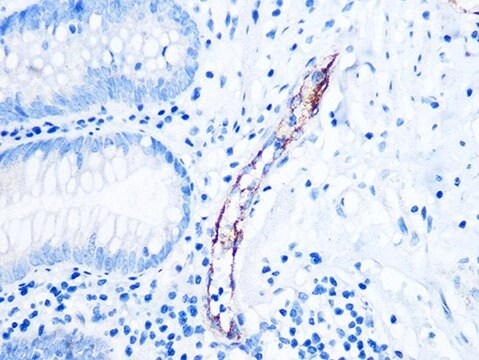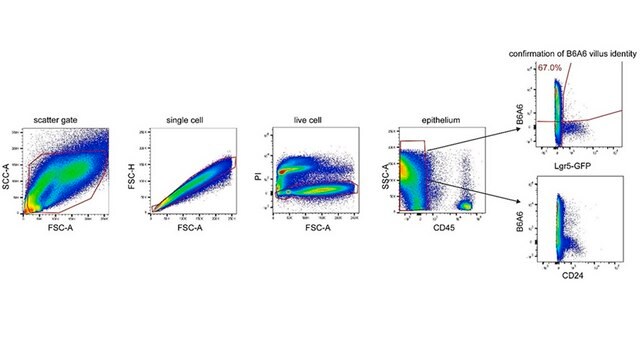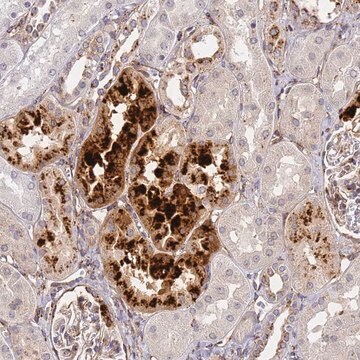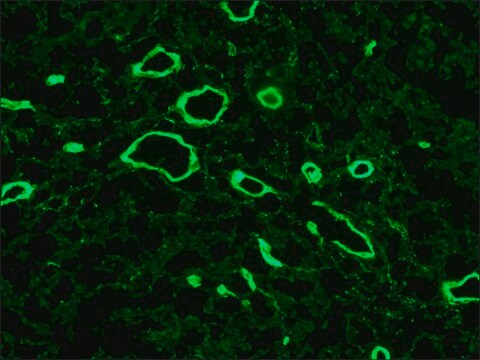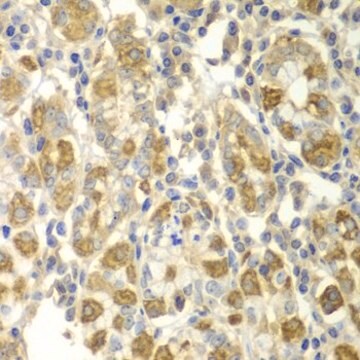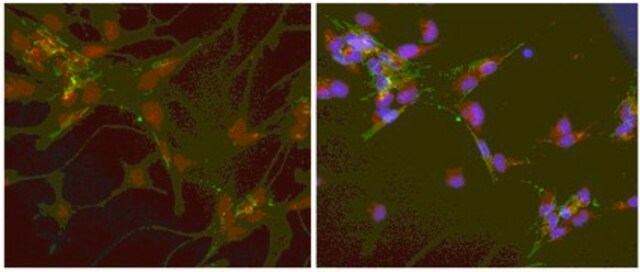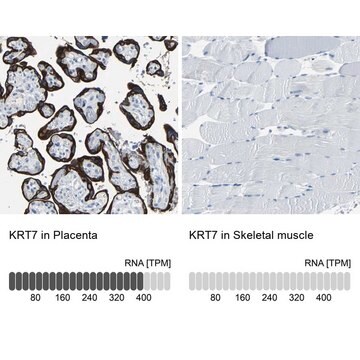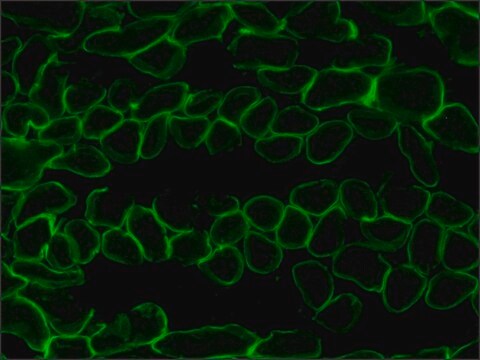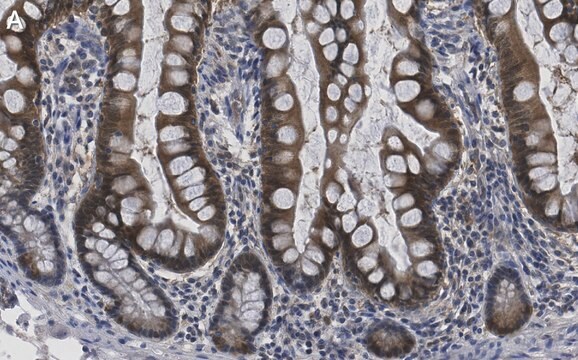MABF3036
Anti-PSGL-1/CD162 Antibody, clone HECA-452
Sinônimo(s):
P-selectin glycoprotein ligand 1;PSGL-1 Selectin P ligand,;CD162
About This Item
Produtos recomendados
fonte biológica
rat
Nível de qualidade
forma do anticorpo
purified antibody
tipo de produto de anticorpo
primary antibodies
clone
HECA-452, monoclonal
peso molecular
calculated mol wt 43.2 kDa
purificado por
affinity chromatography
reatividade de espécies
human
embalagem
antibody small pack of 100 μg
técnica(s)
flow cytometry: suitable
immunohistochemistry: suitable
western blot: suitable
Isotipo
IgMκ
sequência de epítopo
Extracellular domain
nº de adesão de ID de proteína
nº de adesão UniProt
temperatura de armazenamento
-10 to -25°C
modificação pós-traducional do alvo
unmodified
Informações sobre genes
human ... SELPLG(6404)
Categorias relacionadas
Descrição geral
Especificidade
Imunogênio
Aplicação
Evaluated by Flow Cytometry in Human peripheral blood mononuclear cells (PBMC).
Flow Cytometry Analysis (FC): 1.0 μg of this antibody stained one million Human peripheral blood mononuclear cells (PBMC).
Tested Applications
Immunohistochemistry Applications: A representative lot detected PSGL-1/CD162 in Immunohistochemistry application (Duijvestijn, A.M., et al. (1988). Am J Pathol. 130(1):147-55).
Flow Cytometry Analysis: A representative lot detected PSGL-1/CD162 in Flow Cytometry application (Picker, L.J., et al. (1991). Nature. 349(6312):796-9; Fuhlbrigge, R.C., et al. (1997). Nature. 389(6654):978-81).
Western Blotting Analysis: A representative lot detected PSGL-1/CD162 in Western Blotting application (Fuhlbrigge, R.C., et al. (1997). Nature. 389(6654):978-81).
Note: Actual optimal working dilutions must be determined by end user as specimens, and experimental conditions may vary with the end user.
forma física
Reconstituição
Armazenamento e estabilidade
Outras notas
Exoneração de responsabilidade
Não está encontrando o produto certo?
Experimente o nosso Ferramenta de seleção de produtos.
Código de classe de armazenamento
12 - Non Combustible Liquids
Classe de risco de água (WGK)
WGK 2
Ponto de fulgor (°F)
Not applicable
Ponto de fulgor (°C)
Not applicable
Certificados de análise (COA)
Busque Certificados de análise (COA) digitando o Número do Lote do produto. Os números de lote e remessa podem ser encontrados no rótulo de um produto após a palavra “Lot” ou “Batch”.
Já possui este produto?
Encontre a documentação dos produtos que você adquiriu recentemente na biblioteca de documentos.
Nossa equipe de cientistas tem experiência em todas as áreas de pesquisa, incluindo Life Sciences, ciência de materiais, síntese química, cromatografia, química analítica e muitas outras.
Entre em contato com a assistência técnica